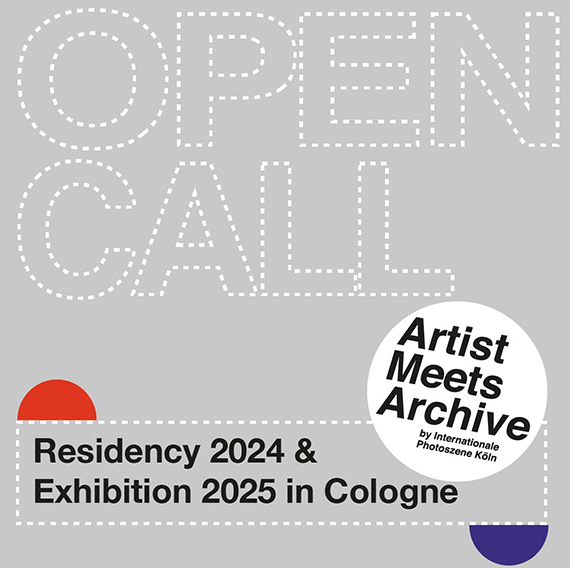
Artist Meets Archive residency programme
Call for entries: 5 Jan – 31 Jan 2024
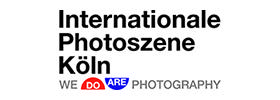
Internationale Photoszene Köln
Im MediaPark 7
50670 Köln
+49 (0)221-966 72 377
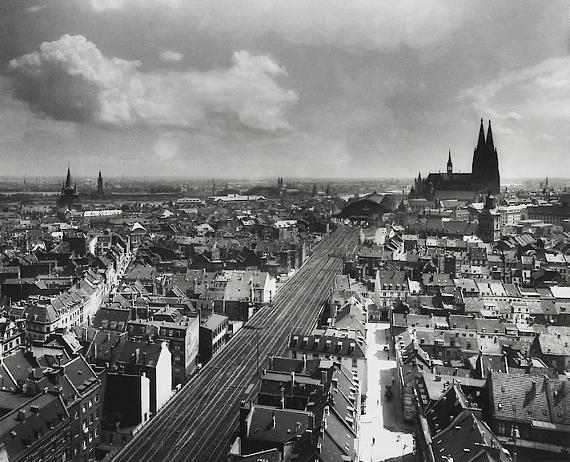
© Kölnisches Stadtmuseum, Graphische Sammlung (Repros: RBA)
Internationale Photoszene Köln
Open Call for the "Artist Meets Archive" residency programme
Applications: 5 – 31 January 2024
www.photoszene.de
Jointly with its partner institutions, and for the very fourth time, Internationale Photoszene Köln is opening up Cologne’s (photo) archives with the Artist Meets Archive residency programme. The aim of the programme is intensive dialogue and collaboration with international artists from the photography or archive fields. For the first time, five prospective artists and artists’ collectives can apply directly for the programme, which has been in place since 2018, via an Open Call. The outcomes of the work phase in Cologne from summer 2024 will be presented at the Photoszene Festival in May 2025.
Some of Cologne’s foremost museums are co-operation partners for the International Photoszene programme: the Photographische Sammlung/SK Stiftung Kultur, the Kölnisches Stadtmuseum, the Rautenstrauch-Joest Museum and Museum Ludwig. A fifth institution, the Dombauarchiv, makes its debut as part of the residency programme.
It is possible to apply until January 31st 2024. Information on participation conditions for the Open call, application procedure and scope of funding can be found here.
About "Artist Meets Archive"
In Cologne, since 2018, the "Artist Meets Archive" residency programme has been delivering proof that archives are inspiring, complex and productive places for artistic engagement and art production. Jointly with its co-operation partners, International Photoszene Köln invites international artists to Cologne so that they can familiarize themselves with an oeuvre of photography history that is as diverse as it is steeped in narratives in the city’s collections, depositories and archives and find new stimuli for their artistic creativity there – and inspire and stimulate the institutions in turn.
The artists will present their work outcomes in an exhibition in the subsequent year, during the Photoszene Festival, which takes place throughout Cologne’s urban area. The residency and exhibition are flanked by numerous events and thus invite the public to join the artists in reflecting on the often invisible, yet influential cultural practice of archiving – and in experiencing the archive as an institution as a lively "third place".
Procedure
* Participation in the Open Call is possible until January 31st 2024. Information on participation conditions for the Open call, application procedure and scope of funding can be found here
* Once the applications have arrived, a jury, made up of representatives of the partner institutions, Photoszene and external experts from the photography field, will nominate the artists for the programme. The artists of the fourth Artist Meets Archive edition will be announced in early March 2024.
* The residencies will take place in summer 2024 and enable the artists to work with the photographic holdings of the host institutions under the supervision of the latter.
* In May 2025, the exhibitions of the Artist Meets Archive programme will be opened as part of the Photoszene Festival.
The participating institutions in 2024/2025
Dombauarchiv
The Dombauarchiv documents the construction and restoration measures carried out since the Middle Ages on one of the world’s most important religious edifices and a landmark of the city – Cologne Cathedral. It encompasses almost the entire holding of papers concerning the cathedral’s construction since 1816, along with approx. 20,000 plans and drawings, a comprehensive holding of historical and contemporary photographs, and a large specialist library that contains approx. 25,000 volumes and 230 ongoing publications. Added to these is an art collection comprising paintings, graphics and arts-and-crafts objects. In addition, the Three Magi collection offers pictorial testimonies and scientific literature on the Holy Three Kings. In the cathedral’s model chamber, hundreds of plaster models from the 19th and 20th centuries are kept, and not only those but also original sculptures of the medieval Peter’s Gate.
The Dombauarchiv’s extensive image collection, containing some 50,000 historical and present-day photographs of Cologne Cathedral, its fixtures, and the restoration and conservation works undertaken by the Kölner Dombauhütte, along with reproductions and scans of archived items and plans from the Dombauarchiv, is available for scientific research or also generally for publications about Cologne Cathedral. The Dombauarchiv is a scientific institution which stimulates, supervises and publicizes cathedral research in many domains.
Die Photographische Sammlung/SK Stiftung Kultur
The foundation stone for Die Photographische Sammlung/SK Stiftung Kultur was laid with the acquisition of the August Sander Archive in 1992 by what was then the Stadtsparkasse Köln – now the Sparkasse Köln/Bonn. Sander’s work is synonymous with the documentary, conceptual approach in photography, which forms the collection’s focus. Further contemporary positions are also tied to it, for instance Cuny Janssen, Francesco Neri, Gabriele and Helmut Nothhelfer, Judith Joy Ross and Wilhelm Schürmann. With bundles by likes of Albert Renger-Patzsch or Ruth Hallensleben, important positions from the field of landscape and industrial photography are present. The latter genre is represented by Bernd and Hilda Becher in particular. On the side of architecture photography and the image of the urban landscape are works by Boris Becker, Werner Mantz, Hugo Schmölz and Petra Wittmar. Further, the oeuvre of Jim Dine offers a broadly based field of observation. Also comprehensive is the former collection of the German Photographic Association, which has very different areas of photography at the ready.
Kölnisches Stadtmuseum
The Kölnisches Stadtmuseum has been collecting objects concerning Cologne’s history from the Middle Ages to the present day since its establishment in 1888. In March 2024, it is set to open a modern, unconventional permanent display at a new location, the former Franz Sauer fashion house in Minoritenstraße. The long-term aim is to secure a new location for the museum in Cologne’s historical heart, in direct proximity to Cologne Cathedral. Photographs have also been collected since the museum’s founding. As a consequence, the Graphic Collection of the Kölnisches Stadtmuseum also comprises a comprehensive photo collection (incl. around 20,000 picture postcards), which covers some 20 percent of that holding.
Photographs from the holdings of the Historical Archive of the City of Cologne and from the city’s building construction office were among the very first objects in the museum. Photography’s emphasis, in that context, lay on urban profile and architecture, which also covered the Rhine region up until 1945 at least. However, portraits and “traditional costume pictures”, so pictures of people of all ages and genders collected on account their clothing, swiftly followed. In addition, the emphasis lies on photographers from Cologne. Up until the middle of the 20th century, photographs were collected essentially in order to serve as chronological documents; artistic photography did not feature in the collection until the acquisition of August Sander’s "Köln wie es war" portfolio. Naturally, that, too, was occupied with urban history, profile, culture, architecture and so on. That continues to be the theme to this day.
Rautenstrauch-Joest-Museum
The Rautenstrauch-Joest-Museum in Cologne is a museum undergoing upheaval, that is seeking new ways to transform itself into an interdisciplinary forum for a post-migrant society. Its establishment falls under the Colonial Era, and a major part of the collection originates from the period before World War One. The collection comprises some 60,000 quotidian and ritual objects and approximately 100,000 historical photographs from Africa, Asia, the Americas and the Pacific. On the basis of this collection holding, examinations of the colonial legacy and exploration of new methods of curatorial collaboration are shifted into the focus and new approaches for communicating current issues are sought.
The museum’s photograph archive has long been at the centre of attention. The core of the holding is formed by photographs from the late 19th century up until 1945. Geographically and chronologically, the collection is narrowly associated with German colonial rule. It reflects the striving for encyclopaedic recording that was widespread in the 19th-century – striving for the documentation, categorization and classification of the world and its inhabitants. Working with the photographs involves opening the archive on the search for new expressive forms and decolonial spheres of action within the museum.
Museum Ludwig*
With approximately 70,000 works, Museum Ludwig is home to a significant and comprehensive collection on the subject of photography, from the early days to the present, and was one of the first museums of modern and contemporary art to dedicate a whole collection to photography. This collection was established in 1977. The photography collection includes early daguerreotypes, important artistic photographs from the 19th into the 21st century, albums and portfolios, but also extensive materials on the medium’s cultural history. In this case, too, it was private collectors who laid the foundation stone for the photography collection in 1977, with acquisitions and gifts from the collection of L. Fritz and Renate Gruber, who cultivated prestigious contacts to photographers within Germany and abroad.
*Museum Ludwig issues the invitation to the Artist Meets Archive programme to the artists directly; it is not possible to apply to Museum Ludwig via the Open Call.
Internationale Photoszene Köln
Internationale Photoszene Köln exists to promote artistic photography and is the exemplary embodiment of Cologne as a vibrant photography location. Since its first edition in 1984, in continuation of the picture shows organized by L. Fritz Gruber to accompany the trade fair photokina, the participatory festival has become a firm part of the city’s profile and every year, today, presents numerous exhibitions on photography and related visual media that draw up to 100,000 visitors. The next Photoszene Festival will be opened in May 2025.
www.photoszene.de
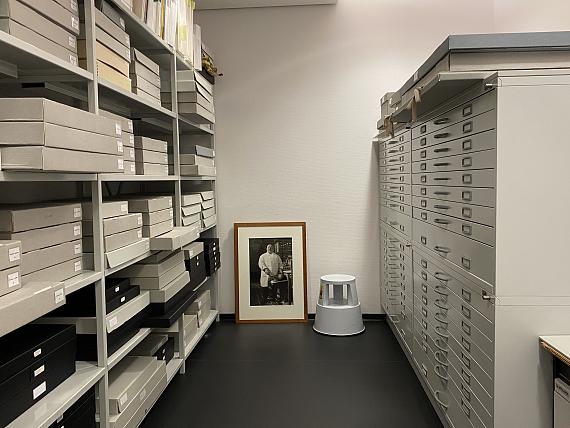
Internationale Photoszene Köln
Open Call zu "Artist Meets Archive" Residenzprogramm
Bewerbung bis 31. Januar 2024
www.photoszene.de
Mit dem Residenzprogramm Artist Meets Archive öffnet die Internationale Photoszene Köln gemeinsam mit ihren Partnerinstitutionen bereits zum vierten Mal die (Foto-)Archive Kölns. Ziel des Programms ist der intensive Austausch und die Zusammenarbeit mit internationalen Künstler:innen aus den Bereichen Fotografie oder Archiv. Erstmals können sich fünf interessierte Künstler:innen und Künstler:innenkollektive über einen Open Call direkt für das seit 2018 bestehende Programm bewerben. Die Ergebnisse der Arbeitsphase in Köln ab dem Sommer 2024 werden zum Photoszene-Festival im Mai 2025 präsentiert.
Kooperationspartner:innen für das Programm der Internationalen Photoszene sind einige der bedeutendsten Museen Kölns: die Photographische Sammlung/SK Stiftung Kultur, das Kölnische Stadtmuseum, das Rautenstrauch-Joest Museum und das Museum Ludwig. Als fünfte Institution konnte erstmals das Dombauarchiv für das Residenzprogramm gewonnen werden.
Die Bewerbung ist zwischen dem 5. und 31. Januar 2024 möglich. Informationen zu Teilnahmebedingungen am Open Call, Bewerbungsablauf und dem Förderumfang hier
Über das Programm "Artist Meets Archive"
In Köln beweist das Residenzprogramm der Photoszene "Artist Meets Archive" seit 2018, dass Archive inspirierende, komplexe und produktive Orte für eine künstlerische Auseinandersetzung und Kunstproduktion sind. Die Internationale Photoszene Köln lädt gemeinsam mit ihren Kooperationspartner:innen internationale Künstler:innen nach Köln ein, um in den Sammlungen, Depots und Archiven der Stadt ein ebenso vielfältiges wie geschichtsträchtiges Oeuvre der Fotografiegeschichte kennenzulernen und hier neue Impulse für ihr künstlerisches Schaffen zu finden – und ebensolche in die Institutionen zurückzuspielen.
Ihre Arbeitsergebnisse werden die Künstler:innen im Folgejahr während des Photoszene-Festivals, das im gesamten Stadtgebiet Kölns stattfindet, im Rahmen einer Ausstellung präsentieren. Die Residenz und Ausstellung werden durch zahlreiche Veranstaltungen flankiert und laden so die Öffentlichkeit dazu ein, gemeinsam mit den Künstler:innen über die oftmals unsichtbare, aber dennoch wirkmächtige Kulturpraktik des Archivierens nachzudenken – und die Institution Archiv als lebendigen "dritten Ort" zu erleben.
Ablauf
* Die Bewerbung am Open Call ist zwischen dem 5.1. und 31.1.2024 möglich. Informationen zu Teilnahmebedingungen, Bewerbungsablauf und Förderumfang hier
* Nach Eingang der Bewerbungen wird eine Jury, bestehend aus Vertreter:innen der Partnerinstitutionen, der Photoszene und externen Expert:innen aus dem Bereich der Fotografie, die Künstler:innen für das Programm nominieren. Die Bekanntgabe der Künstler:innen der vierten Artist Meets Archive Ausgabe erfolgt Anfang März 2024.
* Die Residenzen finden im Sommer 2024 statt und ermöglichen es den Künstler:innen mit den Fotografiebeständen der einladenden Institution und unter Betreuung dieser zu arbeiten.
* Im Mai 2025 werden die Ausstellungen des Artists Meets Archive-Programms im Rahmen des Photoszene-Festivals eröffnet.
Die teilnehmenden Institutionen 2024/2025
Dombauarchiv
Das Dombauarchiv dokumentiert die seit dem Mittelalter durchgeführten Bau- und Restaurierungsmaßnahmen an einem der weltweit bedeutsamsten Sakralbauten und Wahrzeichen der Stadt – dem Kölner Dom. Es umfasst nahezu den gesamten Aktenbestand zum Dombau seit 1816 sowie ca. 20.000 Pläne und Zeichnungen, einen umfassenden Bestand an historischen und zeitgenössischen Fotografien und eine große Fachbibliothek mit ca. 25.000 Bänden und 230 laufenden Veröffentlichungen. Hinzu kommt eine Kunstsammlung mit Gemälden, Grafiken und kunstgewerblichen Objekten. Eine umfangreiche Dreikönigensammlung bietet zudem Bildzeugnisse und wissenschaftliche Literatur zu den Heiligen Drei Königen. In der Modellkammer des Domes werden u. a. Hunderte von Gipsmodellen des 19. und 20. Jahrhunderts, aber auch originale Skulpturen des mittelalterlichen Petersportals aufbewahrt.
Die umfassende Bildsammlung des Dombauarchives mit etwa 50.000 historischen und aktuellen Fotografien des Kölner Domes, seiner Ausstattung und der Arbeiten der Kölner Dombauhütte sowie mit Reproduktionen und Scans von Archivalien und Plänen des Dombauarchivs steht für die wissenschaftliche Forschung aber auch ganz allgemein für Veröffentlichungen zum Kölner Dom zur Verfügung. Das Dombauarchiv ist eine wissenschaftliche Institution, die die Domforschung auf vielen Gebieten anregt, betreut und publiziert.
Die Photographische Sammlung/SK Stiftung Kultur
Mit dem Ankauf des August Sander Archivs 1992 durch die damalige Stadtsparkasse Köln – heute Sparkasse KölnBonn – ist der Grundstein für die Photographische Sammlung/SK Stiftung Kultur gelegt worden. Mit Sanders Werk verbindet sich der dokumentarisch konzeptuelle Ansatz in der Photographie, der den Schwerpunkt der Sammlung bildet. Auch weitere zeitgenössische Positionen binden daran an wie etwa Cuny Janssen, Francesco Neri, Gabriele und Helmut Nothhelfer, Judith Joy Ross und Wilhelm Schürmann. Mit Konvoluten etwa von Albert Renger-Patzsch oder Ruth Hallensleben sind wichtige Positionen aus dem Bereich der Landschafts- und Industriephotographie vorhanden. Letztere wird insbesondere von Bernd und Hilla Becher vertreten. Für die Architekturphotographie und das Bild der Stadtlandschaft sprechend sind Werke von Boris Becker, Werner Mantz, Hugo Schmölz und Petra Wittmar. Das photographische Werk von Jim Dine bietet des Weiteren ein breit gefächertes Betrachtungsfeld. Umfangreich ist darüber hinaus die ehemalige Sammlung der Deutschen Gesellschaft für Photographie, die sehr unterschiedliche Bereiche der Photographie bereithält.
Kölnisches Stadtmuseum
Das Kölnische Stadtmuseum sammelt seit der Gründung im Jahr 1888 Objekte zur Geschichte Kölns vom Mittelalter bis in die Gegenwart. Das Museum wird im März 2024 an einem neuen Standort, dem ehemaligen Modehaus Franz Sauer in der Minoritenstraße, eine moderne, unkonventionelle Dauerausstellung eröffnen. Langfristig soll das Museum in der Historischen Mitte Köln in direktem Umfeld des Kölner Doms einen neuen Standort finden. Seit Gründung des Museums werden auch Fotografien gesammelt. Daher gehört zur Graphischen Sammlung des Kölnischen Stadtmuseums eine umfangreiche Fotosammlung (incl. rund 20.000 Ansichtskarten), die etwa 20 Prozent dieses Bestandes umfasst.
Schon zu den ersten Objekten des Museums zählten Fotografien aus den Beständen des Historischen Archivs der Stadt Köln und des städtischen Hochbauamtes. Dabei lag der Schwerpunkt der Fotografie auf Stadtbild und Architektur, die zumindest bis 1945 auch das Rheinland umfasste. Aber rasch folgten Porträts und "Trachtenbilder", also Bilder unbekannter Personen jeden Geschlechts und Alters, die wegen ihrer Kleidung gesammelt wurden. Zudem liegt der Schwerpunkt auf Kölner Fotografinnen und Fotografen. Bis zur Mitte des 20. Jahrhunderts wurde Fotografien im Wesentlichen als Zeitdokumente gesammelt, erst mit dem Ankauf von August Sanders Mappenwerk "Köln wie es war" folgte die künstlerische Fotografie, natürlich auch diese unter dem Aspekt Stadtgeschichte, -bild, -kultur, -architektur usw. Dies wird bis heute fortgeführt.
Rautenstrauch-Joest-Museum
Das Rautenstrauch-Joest-Museum in Köln ist ein Museum im Umbruch, das nach neuen Wegen sucht, sich in ein interdisziplinäres Forum für eine postmigrantische Gesellschaft umzuwandeln. Seine Gründung fällt in die Kolonialzeit, und ein wichtiger Teil der Sammlung stammt aus der Zeit vor dem Ersten Weltkrieg. Die Sammlung umfasst etwa 60.000 Alltags- und Ritualobjekte und rund 100.000 historische Fotografien aus Afrika, Asien, den Amerikas und dem Pazifik. Ausgehend von diesem Sammlungsbestand werden Auseinandersetzungen zum kolonialen Erbe und die Erprobung neuer kuratorischer Methoden der Zusammenarbeit in den Fokus gerückt und nach neuen Herangehensweisen für die Vermittlung von aktuellen Fragestellungen gesucht.
Das fotografische Archiv des Museums steht schon länger im Zentrum der Aufmerksamkeit. Den Kernbestand bilden Fotografien aus dem späten 19. Jahrhundert bis 1945. Geografisch und zeitlich ist die Sammlung eng mit der deutschen Kolonialherrschaft verbunden. Sie spiegelt das im 19. Jahrhundert verbreitete Streben nach enzyklopädischer Erfassung – der Dokumentation, Kategorisierung und Klassifizierung der Welt und ihrer Bewohner*innen wider. Die Öffnung des Archivs auf der Suche nach neuen Ausdrucksformen und nach dekolonialen Handlungsräumen im Museum prägen die Arbeit mit den Fotografien.
Museum Ludwig*
Das Museum Ludwig beherbergt mit rund 70.000 Werken eine bedeutende und umfangreiche Sammlung zur Fotografie von den Anfängen bis in die Gegenwart und gehört zu den ersten Museen moderner und zeitgenössischer Kunst, die der Fotografie eine eigene Sammlung widmeten. 1977 wurde sie gegründet. Zur Sammlung Fotografie zählen frühe Daguerreotypien, bedeutende künstlerische Fotografien vom 19. bis ins 21. Jahrhundert, Alben und Mappenwerke, aber auch umfangreiche Materialien zur Kulturgeschichte des Mediums. Auch hier waren es private Sammler*innen, die 1977 den Grundstein für die Sammlung Fotografie legten, mit Ankäufen und Schenkungen aus der Sammlung von L. Fritz und Renate Gruber, die beste Kontakte zu Fotograf*innen im In- und Ausland pflegten.
*Das Museum Ludwig spricht die Einladung zum Programm Artist Meets Archive an die Künstler:in direkt aus, eine Bewerbung beim Open Call für das Museum Ludwig ist nicht möglich.
Internationale Photoszene Köln
Die Internationale Photoszene Köln dient der Förderung der künstlerischen Fotografie und steht beispielhaft für den lebendigen Fotostandort Köln. Seit seiner ersten Ausgabe im Jahr 1984, in Fortsetzung der von L. Fritz Gruber organisierten Bilderschauen zur Messe photokina, etablierte sich das partizipative Festival in der Stadt und zeigt heute jedes Jahr zahlreiche Ausstellungen zur Fotografie und verwandten Bildmedien, die bis zu 100.000 Besucher:innen anziehen. Das nächste Photoszene-Festival wird im Mai 2025 eröffnet.
Weitere Informationen: www.photoszene.de
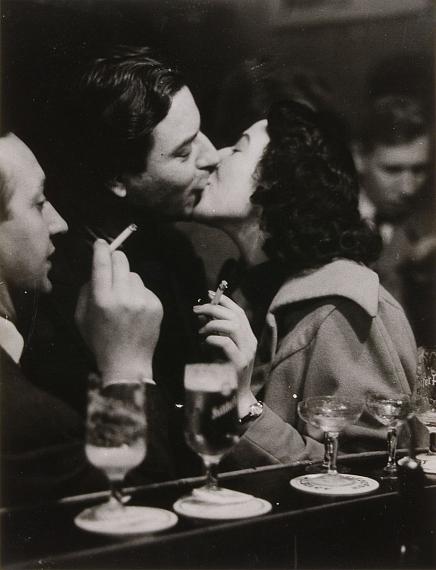
© Museum Ludwig, Köln, Reproduktion: Rheinisches Bildarchiv Köln
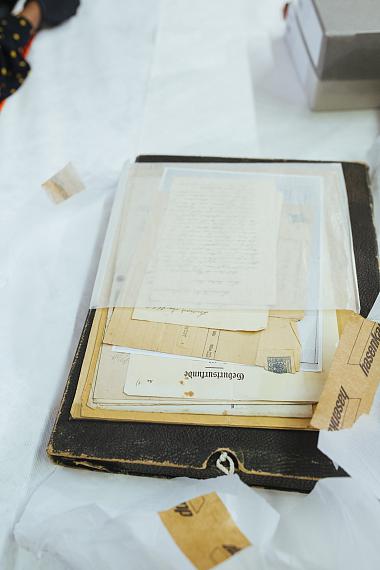
© buerofuerkunstdokumentation
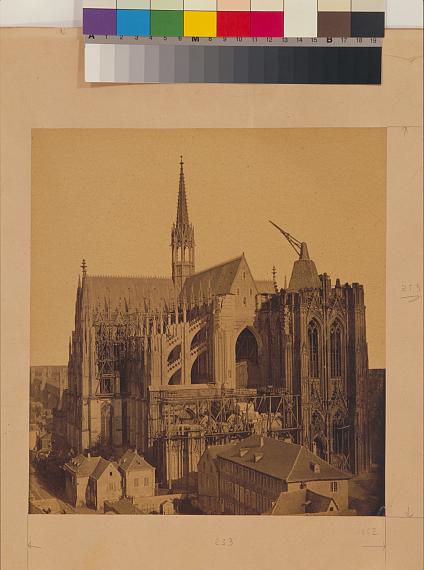
© Hohe Domkirche Köln, Dombauhütte